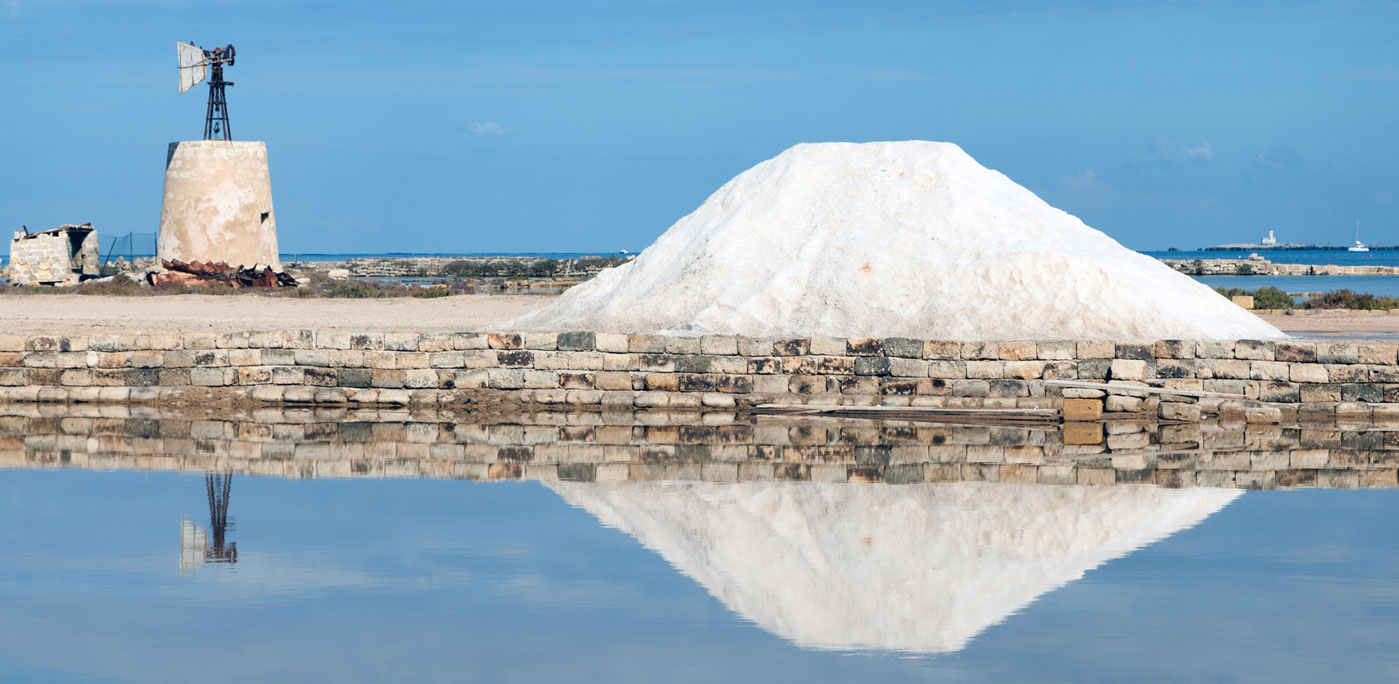Greyish in color, rich in magnesium and potassium, but poor in sodium chloride, Trapani unrefined salt is still gathered by hand, as it was in the 14th century. It was, however, the Phoenicians of 7th century BC to have understood its great potentiality first. In later times, saltworks consisting of a communicating pipes’ system connected to the sea were created.
During the summer salinari, the craftsmen gathering and packing this salt, are not many and cannot compete with the faster paced competition of industrially gathered and packed salt, even if its chemical and organoleptic characteristics are far superior.

After the flood of 1960 destroyed the saltworks along the coast, the industry remained inactive until 1973, when State Monopoly on salt was abolished and the industry finally resurrected. Today, the area is part of the Egadi Marine Reserve, home to a unique habitat and a crystal clear waters.

Here, the wind lifts and carries around an extra fine, unrefined salt, extremely soluble and rich in iodine, known as sale scuma, or fior di sale, a true specialty which should get definitely more attention. Traditionally used to flavor Flavignana’s red tuna, it is also protagonist of some unusual preparations like the Trapani saltworks’ chocolate and fior di sale cake.





























